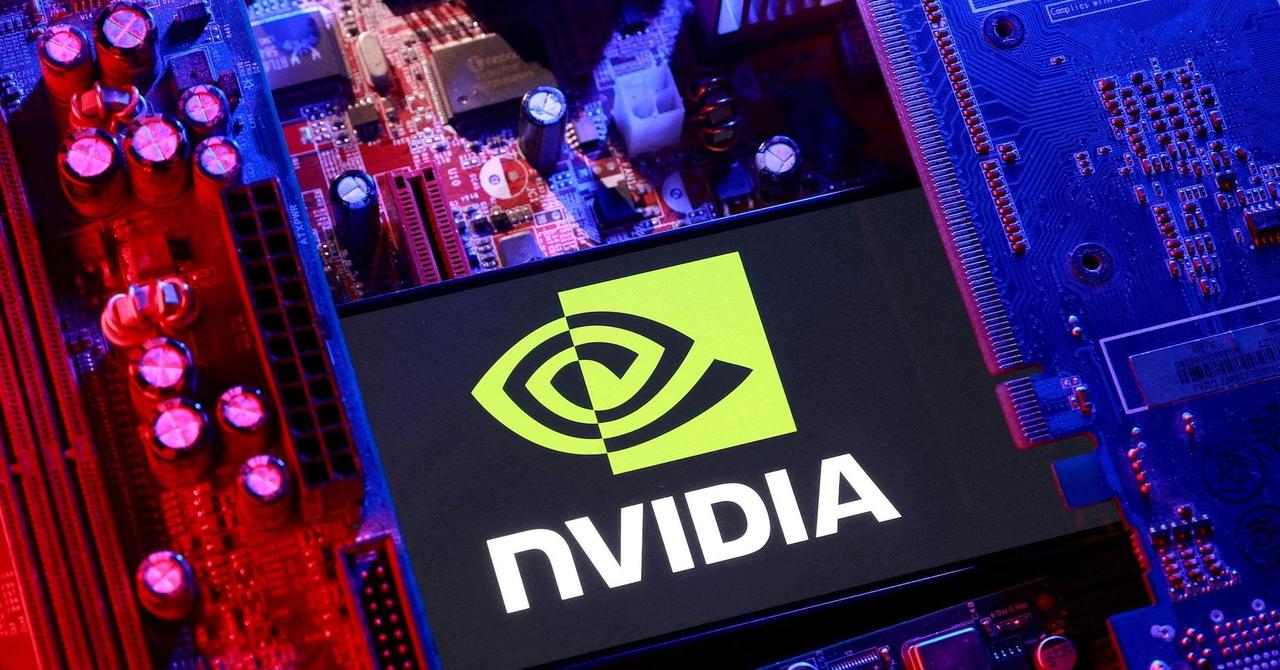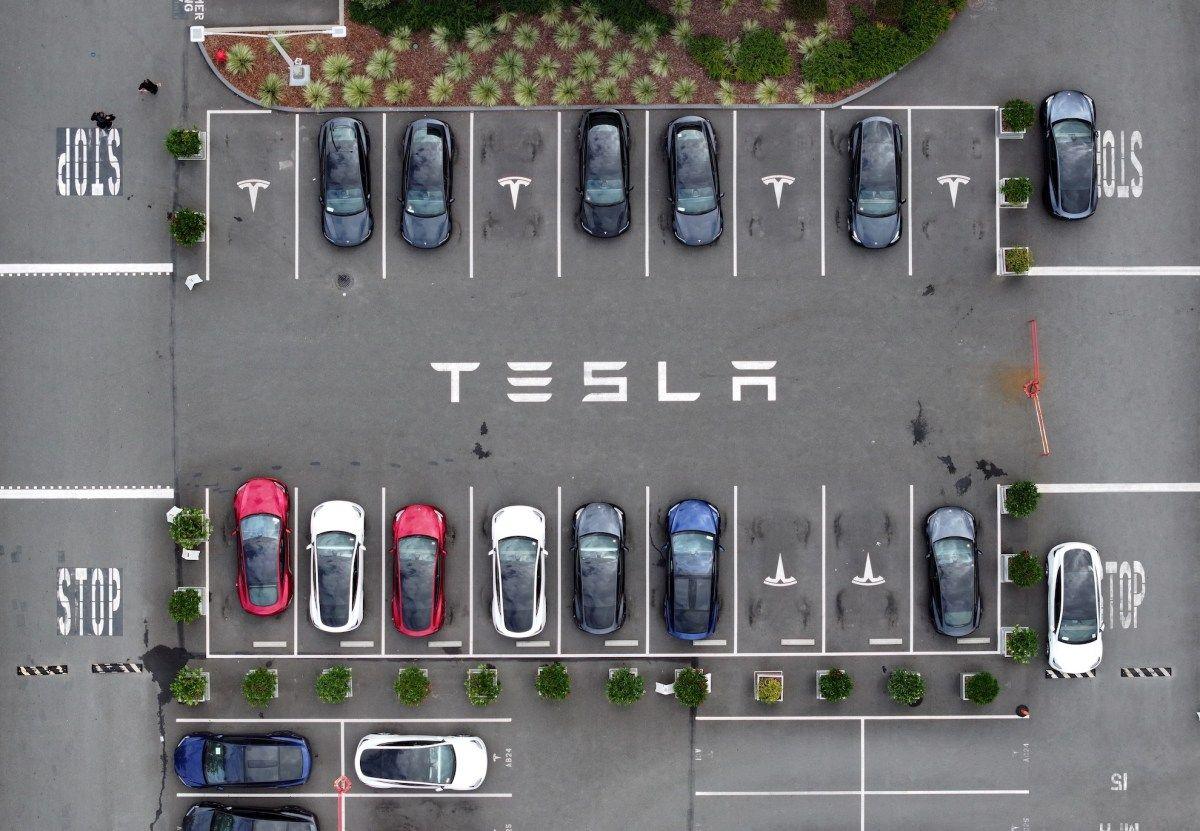Luma AI Secures $900 Million Funding to Build World's Largest AI Supercluster in Saudi Arabia
5 Sources
5 Sources
[1]
Luma AI raises $900 million in funding round led by Saudi AI firm Humain
Video generation startup Luma AI said it raised $900 million in a new funding round led by Humain, an artificial intelligence company owned by Saudi Arabia's Public Investment Fund. The financing, which included participation from Advanced Micro Devices' venture arm and existing investors Andreessen Horowitz, Amplify Partners and Matrix Partners, was announced at the U.S.-Saudi Investment Forum on Wednesday. The company is now valued upwards of $4 billion, CNBC has confirmed. Luma develops multimodal "world models" that are able to learn from not only text, but also video, audio and images in order to simulate reality. CEO Amit Jain told CNBC in an interview that these models expand beyond large language models, which are solely trained on text, to be more effective in "helping in the real, physical world." "With this funding, we plan to scale our and accelerate our efforts in training and then deploying these world models today," Jain said. Luma released Ray3 in September, the first reasoning video model that can interpret prompts to create videos, images and audio. Jain said Ray3 currently benchmarks higher than OpenAI's Sora 2 and around the same level as Google's Veo 3. Humain, which was launched in May, is aiming to deliver full-stack AI capabilities to bolster Saudi Arabia's position as a global AI hub. The company is led by industry veteran Tareq Amin, who previously ran Aramco Digital and before that was CEO of Rakuten Mobile. Luma and Humain will also partner to build a 2-gigawatt AI supercluster, dubbed Project Halo, in Saudi Arabia. The buildout will be one of the one of the largest deployments of graphic processing units (GPUs) in the world, Jain said. Major tech companies have been investing in supercomputers across the globe to train massive AI models. In July, Meta announced plans to build a 1-gigawatt supercluster called Prometheus, and Microsoft deployed the first supercomputing cluster using the Nvidia GB300 NVL72 platform in October. "Our investment in Luma AI, combined with HUMAIN's 2GW supercluster, positions us to train, deploy, and scale multimodal intelligence at a frontier level," Amin said in a release. "This partnership sets a new benchmark for how capital, compute, and capability come together." The collaboration also includes Humain Create, an initiative to create sovereign AI models trained on Arabic and regional data. Along with focusing on building the world's first Arabic video model, Jain said Luma models and capabilities will be deployed to Middle Eastern businesses. He added that since most models are trained by scraping data from the internet, countries outside the U.S. and Asia are often less represented in AI-generated content. "It's really important that we bring these cultures, their identities, their representation -- visual and behavioral and everything -- to our model," Jain said. AI-generated content tools have received significant backlash over the past year from entertainment studios over copyright concerns. Luma's flagship text-to-video platform Dream Machine garnered some accusations of copying IP earlier this year, but Jain the company has installed safeguards to prevent unwanted usage. "Even if you really try to trick it, we are constantly improving it," he said. "We have built very robust systems that are actually using models we trained to detect them."
[2]
Luma AI Raises $900 Million Series C to Power 2GW AI Supercluster in Saudi Arabia | AIM
Luma AI, a leading frontier AI company focused on multimodal general intelligence (AGI), has raised $900 million in a Series C funding round led by HUMAIN, a public investment fund (PIF) that delivers global full-stack AI solutions, according to the release. AMD Ventures, Andreessen Horowitz, Amplify Partners, and Matrix Partners also participated in the round. The funding will support Luma AI's partnership with HUMAIN to become a customer of Project Halo, a 2-gigawatt AI supercluster in Saudi Arabia, one of the largest compute infrastructure buildouts in the world. The supercluster will enable Luma AI to train and deploy next-generation AI systems capable of understanding and operating in the physical world, going beyond large language models (LLMs) to learn from video, audio, and language data at an unprecedented scale. "HUMAIN is the perfect partner for this next stage in Luma AI's explosive trajectory," said Amit Jain, CEO and co-founder of Luma AI. Jain explained that to create AI that can help humanity in the physical world and expand understanding of the universe, it is necessary to build systems that can learn from a quadrillion tokens of information, roughly the collective digital memory of humanity, contained in video, image, audio, and language. HUMAIN is deploying frontier compute infrastructure at impressive speed, and this is critical to achieving Luma AI's mission. To this, Tareq Amin, CEO of HUMAIN, mentioned that "Our investment in Luma AI, combined with HUMAIN's 2GW supercluster, positions us to train, deploy, and scale multimodal intelligence at a frontier level. This partnership sets a new benchmark for how capital, compute, and capability come together." The supercluster will support Luma AI in training peta-scale multimodal data, 1,000 to 10,000 times more information than current frontier LLMs, making AI more applicable for real-world tasks. It will also feature next-generation inference systems capable of serving these models globally in real-time. Luma AI's flagship model, Ray3, has already demonstrated the company's ability to transform foundational research into commercial products, deployed across studios, advertising agencies, and brands, including integration within Adobe's global products. With this new round, Luma AI plans to expand into simulation, design, and robotics while maintaining leadership in entertainment and advertising. The company was also the first to launch models within HUMAIN Create, a regional initiative for building sovereign AI models tailored for the Arabic world. These models are designed to understand cultural context, visual nuance, and linguistic diversity, enabling creators, enterprises, and governments to adopt AI solutions that reflect their identity, values, and sovereignty.
[3]
Multimodal AI developer Luma AI raises $900M in funding - SiliconANGLE
Luma AI Inc., a developer of image and video generation models, today announced that it has closed a $900 million funding round. Saudi artificial intelligence company HUMAIN led the Series C investment. AMD Ventures, Andreessen Horowitz, Amplify Partners and Matrix Partners participated as well. CNBC reported that Luma is now valued at more than $4 billion. Luma's flagship algorithm is a video generator called Ray3. The company describes it as the world's first video reasoning model. Luma says that Ray3 can generate clips with realistic motion effects and 16-bit HDR, a technology that helps boost rendering quality. Users can create a clip by uploading an image and typing in instructions on how it should be animated. Ray3 also makes it possible to provide so-called visual annotations. A designer could, for example, draw a line on a photo of a car to show the direction in which the vehicle should move once it's animated. Luma offers Ray3 alongside a series of image generation models called Photon. According to the company, the algorithm family offers better output quality than several popular alternatives for one tenth the cost. The most hardware-efficient Photon model can generate an image with a resolution of 1920 pixels by 1080 pixels for under half a cent. Luma provides its models through an application programming interface. The company says that its software has been adopted by multiple film studios, advertising agencies and in-house marketing teams. In September, Adobe Inc. integrated Ray3 into its Firefly suite of AI design features. Luma developed Ray3 and Photon as part of a research effort focused on inventing "useful general intelligence." It plans to achieve that goal by training its algorithms on only text, the approach taken by some language model developers, but also multimodal data such as images and videos. Luma's team includes the inventors of several foundational multimodal AI technologies. One of those technologies is NeRF, a technique that allows a model to turn photos of an object into a three-dimensional representation. That representation makes it easier to generate additional three-dimensional content such as videos. Members of the Luma team also helped invent DDIM, a method of speeding up image generation models. Luma will use the new funding to finance its research efforts. According to the company, its engineers are developing technology that will make it possible to train AI models on petabytes of data. AI training datasets are usually significantly smaller. "To create AI that can help humanity in the physical world and expand our understanding of the universe, we need to build systems that can learn from a quadrillion tokens of information - roughly the collective digital memory of humanity - contained in video, image, audio, and language," said Luma co-founder and Chief Executive Officer Amit Jain. Luma also plans to release AI software for robots. During development, a robot's neural networks are trained in a simulation that mimics the environment they will be expected to navigate. Video generation models can help improve the quality of such simulations.
[4]
Video generation platform Luma AI raises $900 million, valued at $4 billion - The Economic Times
Luma AI, a US-based startup focussed on visual content generation, has raised $900 million. The round was led by Humain, a Saudi-based public investment fund (PIF), with participation from existing investors Andreessen Horowitz, Amplify Partners, and Matrix Partners. The firm's Indian-American CEO Amit Jain, an IITian who was formerly with Apple, told ET that the domain the company operated in is capital-intensive and requires sizable investments to scale. Sources close to the company pegged its valuation at around $4 billion. This round comes amid large deals in the AI space, with many startups raising millions to scale infrastructure and advance foundational models. "This level of capital is absolutely necessary to unlock what we're building," Jain said, adding, "In the early days, we had to develop a lot of the core technology first, so scaling or raising large amounts of capital didn't make sense until that was done." The funding will support Luma's efforts to develop advanced AI systems that learn from multiple data types including video, audio, and text. As part of the deal, Humain will build a 2-gigawatt compute cluster, among the world's largest, which the startup will use to train its models. The new capital will also support ongoing research and infrastructure development aimed at advancing AI capabilities beyond current large language models (LLMs). Luma's flagship platform Dream Machine enables users to generate professional-grade video and images. A few weeks ago, the company released Ray3, a reasoning model which creates videos, animations, and visuals. "Ray3 performs better than OpenAI's Sora on multiple benchmarks, and is similar in performance to Google's Veo 3," Jain said. The company's technology is used in industries like entertainment, marketing, and robotics to create realistic video content and assist with creative workflows. It counts major technology companies such as Adobe, Amazon Web Services, and Nvidia among its partners. Luma's primary market is currently north America. But Jain said the company wants to aggressively expand in India and other emerging markets, despite their nascent stage. "We have a significant number of smaller studios in India, usually operating at the smaller end of the scale. There are interesting initiatives in the country around generative video, such as Ajay Devgn's production company (Prismix)," he said. Bubble talk Large funding rounds in the AI space and rising valuations have triggered talks of a bubble. While some warn of overvaluation, others point to strong industry demand and sizeable infrastructure investments. In September, Anthropic raised $13 billion in a series F round valuing the company at $183 billion. Cohere secured a valuation of nearly $7 billion in its latest raise. OpenAI's funding of around $40 billion also led to concerns about inflated valuations in the sector. "Some companies are overvalued, 100%. But I think corrections happen roughly every two years. Remember the downturn in late 2023 and 2024? It was severe, but the unhealthy firms exited and the stronger ones survived. Corrections are normal, and more will happen," Jain said.
[5]
Luma AI secures $900 million to advance multimodal intelligence | Advertising | Campaign India
Luma AI has raised significant new capital and secured large-scale compute access in Saudi Arabia to accelerate its multimodal AGI roadmap. Luma AI has raised $900 million in Series C funding to progress its development of multimodal AGI capable of operating in the physical world. The round is led by HUMAIN, a PIF company specialising in full-stack AI solutions, with participation from AMD Ventures and existing investors Andreessen Horowitz, Amplify Partners and Matrix Partners. The investment accompanies a wide-ranging partnership under which Luma AI will become a core customer of HUMAIN's Project Halo, a 2-gigawatt AI supercluster being built in Saudi Arabia. Project Halo is positioned as one of the world's largest compute infrastructure developments and is designed to support next-generation multimodal systems that train on vast video, audio, image and language datasets. The partnership was announced in Washington, D.C., at the U.S.-Saudi Investment Forum during the visit of Crown Prince HRH Mohammad bin Salman Al-Saud. Both companies outlined a joint roadmap focused on advancing large-scale World Models that move beyond current LLMs and enable new applications across robotics, entertainment, advertising, gaming and personalised education through HUMAIN Create. Chief executive Amit Jain said the company aims to build systems capable of learning from a 'quadrillion tokens' across human digital memory and emphasised that HUMAIN's rapid deployment of frontier compute is central to this ambition. Jain noted that the companies will collaborate on customised model development, commercial deployment and multimodal product integration. HUMAIN chief executive Tareq Amin said the investment reflects the company's strategy to build the full value chain required for multimodal intelligence. He described Luma AI as a frontier startup with strong research velocity and the ability to commercialise foundational work at scale. The 2-gigawatt cluster will include next-generation inference systems to serve multimodal models globally. Luma AI's flagship model, Ray3, is already used across studios, agencies and brands and is embedded in Adobe products. The new funding will support expansion into simulation, design and robotics, including continued work on HUMAIN Create to develop sovereign AI models tailored to the Arabic world.
Share
Share
Copy Link
Video generation startup Luma AI raises $900 million in Series C funding led by Saudi AI firm Humain, reaching a $4 billion valuation. The partnership will establish a 2-gigawatt AI supercluster in Saudi Arabia, one of the world's largest compute infrastructure projects.
Major Funding Round Positions Luma AI for Global Expansion
Video generation startup Luma AI has secured $900 million in Series C funding, establishing itself as one of the most well-funded AI companies in the multimodal space
1
. The round was led by Humain, an artificial intelligence company owned by Saudi Arabia's Public Investment Fund, with participation from AMD Ventures and existing investors including Andreessen Horowitz, Amplify Partners, and Matrix Partners2
.
Source: AIM
The funding values Luma AI at over $4 billion, representing a significant milestone for the company founded by Indian-American CEO Amit Jain, a former Apple engineer and IIT graduate
4
. The announcement was made at the U.S.-Saudi Investment Forum during Crown Prince Mohammad bin Salman Al-Saud's visit to Washington, D.C.5
.
Source: Campaign India
Building World's Largest AI Supercluster
The partnership extends beyond funding to include the development of Project Halo, a 2-gigawatt AI supercluster in Saudi Arabia that will be among the largest compute infrastructure deployments globally
1
. This massive infrastructure project positions Saudi Arabia as a significant player in the global AI landscape, with Humain CEO Tareq Amin, formerly of Aramco Digital and Rakuten Mobile, leading the initiative.The supercluster will enable Luma AI to train models on petabyte-scale datasets, processing what Jain describes as "a quadrillion tokens of information - roughly the collective digital memory of humanity" contained in video, image, audio, and language data
3
. This represents a 1,000 to 10,000-fold increase over current frontier large language models, making AI more applicable for real-world tasks2
.Advanced Multimodal AI Technology
Luma AI's flagship product, Ray3, represents what the company calls the world's first reasoning video model, capable of interpreting prompts to create videos, images, and audio
1
. According to CEO Jain, Ray3 currently benchmarks higher than OpenAI's Sora 2 and performs at similar levels to Google's Veo 3, positioning Luma as a serious competitor in the generative AI space4
.
Source: SiliconANGLE
The company's technology portfolio includes the Photon image generation models, which offer superior output quality at one-tenth the cost of popular alternatives
3
. The most efficient Photon model can generate high-resolution images for under half a cent, making professional-grade content creation accessible to a broader market.Related Stories
Strategic Partnerships and Market Expansion
Luma AI has secured significant commercial partnerships, including integration with Adobe's Firefly suite of AI design features and adoption by multiple film studios, advertising agencies, and marketing teams
3
. The company's technology is also being used across entertainment, marketing, and robotics industries, with partnerships including Adobe, Amazon Web Services, and Nvidia4
.The collaboration with Humain includes the development of sovereign AI models through Humain Create, focusing on Arabic language and regional cultural representation
1
. This initiative addresses the underrepresentation of non-Western cultures in AI-generated content, as most models are trained primarily on English-language internet data.References
Summarized by
Navi
[4]
Related Stories
Saudi Arabia Leads $900M Funding Round in Luma AI as Kingdom Expands AI Ambitions
19 Nov 2025•Business and Economy

Saudi Arabia's Humain Unveils $10 Billion VC Fund and Ambitious AI Infrastructure Plans
28 May 2025•Business and Economy

Lila Sciences Secures $115M Funding, Valuation Soars to $1.3B with Nvidia Backing
14 Oct 2025•Technology

Recent Highlights
1
OpenAI releases GPT-5.2 AI model after code red memo targets Google's Gemini 3 threat
Technology

2
Disney invests $1 billion in OpenAI, licenses 200+ characters for Sora AI video generator
Technology

3
OpenAI faces wrongful death lawsuit after ChatGPT allegedly fueled murder-suicide tragedy
Policy and Regulation





